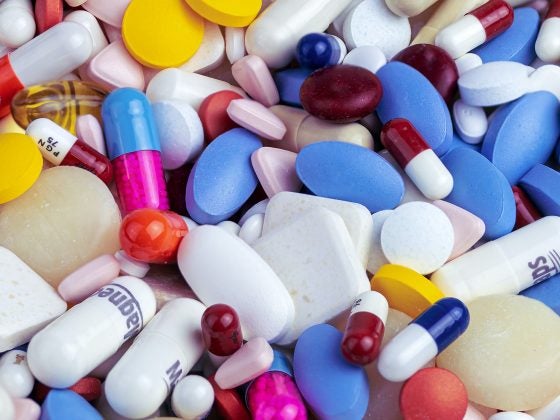With all the emphasis placed on health and wellness in recent years, you probably have a good understanding of the fundamentals of a balanced diet by now. You know it’s important to drink enough water to stay hydrated and consume healthy fats and complex carbs. You also know that you should cut back on simple carbs and sugar.
But even if you’re a seasoned wellness warrior, you may still be unaware of a set of nutrients essential to keeping our bodies healthy and in top shape: trace minerals.
Trace minerals support key bodily functions such as transporting oxygen in the blood, metabolism, hormone production, muscle development, and thyroid health. We only need small amounts, but that goes a long way towards helping your body perform optimally.
The most widely known trace minerals are iron, zinc, copper, iodine, fluoride, chromium, selenium, cobalt, and manganese, which are found in many of the foods we eat. Or at least many of the foods we’re supposed to eat.
This article will cover the most important things you should know about trace minerals, including where you can get them and how to incorporate them into your diet.
A Rundown of the Most Important Trace Minerals
Iron
Iron is needed in the body to form hemoglobin in red blood cells, which binds oxygen and carries it to different organs. Iron is also required in enzyme reactions that play a key role in the immune system.
If you don’t get enough iron in your diet, the reserves in your body get depleted, which may lead to a form of anemia called iron deficiency anemia. Getting enough iron is especially important for teenage girls and women of childbearing age because their bodies require higher amounts than men of the same age. Approximately 40% of women in this age bracket do not get enough iron. On the global level, around 2 billion people develop iron deficiency anemia, making iron deficiency the most common nutrient deficiency.
There are two types of dietary iron. The first is the iron you get from animal sources like organ meats, red meats, poultry, and fish which is called haem iron and is the most bioavailable form. The second type is non-haem iron which we get from cereals, vegetables, beans, pulses, nuts, and fruit. Although it’s the predominant form of iron in our diets, the absorption tends to be less reliable because many components in these foods, such as fiber and phytic acid can bind to it in the intestine. This is why people who follow strict vegetarian diets are more susceptible to iron deficiency.
You can also find iron-fortified cereals and bread, but, once again, absorption can be an issue.
Zinc
Zinc is present in many enzymes in our bodies and acts as a catalyst in a number of reactions needed to make proteins and genetic material. It plays a crucial role in cell division, which means it’s needed for normal development in children and tissue repair. The immune system also requires optimal levels of zinc to function properly.
Zinc deficiency can cause impaired development in children. Delayed puberty and small stature have been studied in relation to zinc deficiency, but it’s unclear whether these issues can be attributed solely to lack of zinc or other nutrient deficiencies as well. Zinc deficiency can also lead to neurological abnormalities, weakened immune system, skin rashes, and anemia.
You can find zinc in many foods but, similarly to iron, it’s more easily absorbed from meats such as beef, pork, turkey, dark-meat chicken, and crab meat. You can also find it in eggs, cheese, milk, pulses, nuts, and wholegrain cereals. Note that the phytic acid in cereals and pulses affects its bioavailability.
Iodine
Your thyroid gland needs iodine to make two hormones called triiodothyronine (T3) thyroxine (T4) which play key roles in regulating metabolic rate as well as normal physical and mental development.
A lack of iodine can cause symptoms such as mental sluggishness, abnormal lipid profile, slowed metabolism, and weight gain. Iodine deficiency can also cause the thyroid gland to swell. Furthermore, if women are extremely deficient in iodine during pregnancy, it can have a detrimental effect on the neurological development of their infants, causing them to be born with mental impairments.
To counteract these risks, around 120 countries fortify salt with iodine. The amount of iodine you can get from plant sources depends heavily on the level of iodine found in the soil and water in the plant’s growing environment. The best source for iodine is seafood, but milk is also a good alternative.
Copper
To metabolize iron efficiently, your body also needs copper. Copper is also part of enzymes that perform critical functions, and it’s important for normal development in children, the immune system, healthy connective tissue, energy production, and neurotransmission.
A copper deficiency can result from malnutrition, excessive zinc intake, or malabsorption due to a genetic disorder like Menke’s disease that makes the body unable to absorb copper. Lack of iron can cause neurodegenerative diseases, bone demineralization, issues with connective tissues, abnormal blood cells, and a weakened immune system. It can also cause cardiovascular problems.
Another genetic disorder called Wilson’s disease makes the body unable to excrete excess copper, which also has negative side-effects because it accumulates in the liver and brain. However, the overload of copper in healthy adults is rare.
Copper deficiency stemming from dietary reasons is also rare because our bodies are efficient at absorbing it, and it’s found in plentiful amounts in many of the foods we routinely consume. We get about a third of our intake from wholegrain cereals, and the rest comes from meats, vegetables, beans, nuts, and fruits.
Selenium
Selenium is part of selenocysteine, a protein-creating amino acid and building block of selenoproteins, which play an important role in immune function, skeletal muscle regeneration, thyroid hormone metabolism, calcium homeostasis, and cell maintenance. The main benefit of selenium is that it can help protect cells from oxidative damage. The body also needs it to metabolize iodine for producing thyroid hormones.
Keshan disease is a good illustration of the effects of selenium deficiency. This is a heart condition that affects pregnant women and children in the Keshan region located in rural China. The soil in this region doesn’t have enough selenium, resulting in deficiencies in the food chain.
You can find selenium in a wide range of foods, but the richest sources are Brazil nuts, meat, fish, eggs, and bread. The concentration of selenium in cereals depends on the concentration of selenium in the soil. For example, North American wheat is known to be much richer in selenium than European wheat.


















